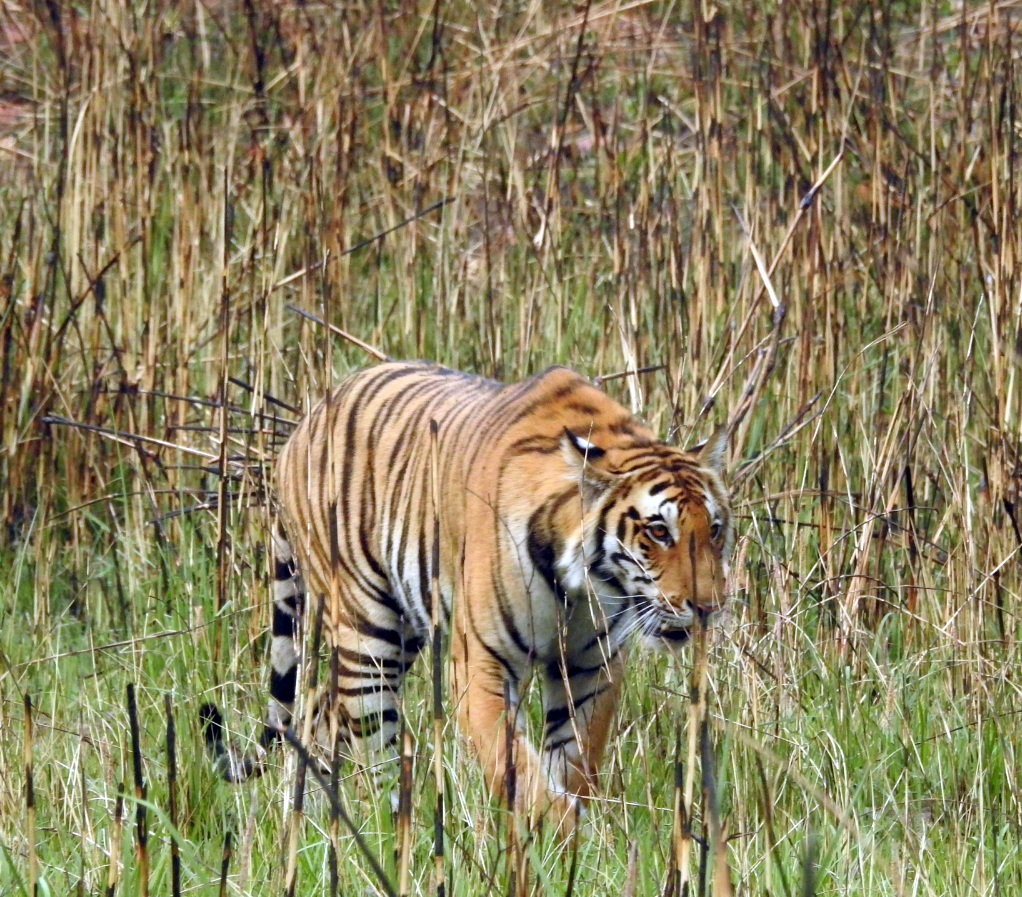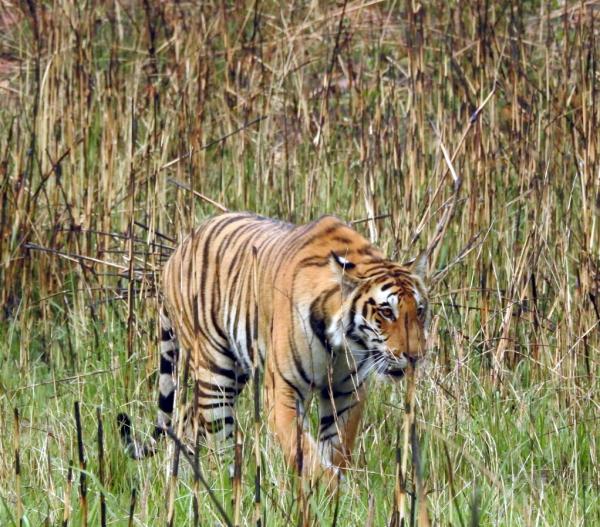KID REPORTERS’ NOTEBOOK
Project Tiger


In the past century, the tiger population in India has dwindled from 100,000 to about 3,000.
India is home to some of the world’s largest cats, including the tiger, lion, jaguar, leopard, and snow leopard. However, habitat encroachment and poaching, among other causes, have made the tiger an endangered species.
The South Asian country is now home to an estimated 3,000 wild tigers, down from a population of 100,000 at the start of the 20th century. The lion population has also decreased dramatically, while the cheetah is now extinct.
In 1973, India launched “Project Tiger” to help conserve the “national animal” and its habitat. One of the initiative’s major achievements has been increasing tiger reserves from 9 to 50.
Other measures have also been successful. Buffer zones have been created between jungles and villages, minimizing human disturbance of the tiger population. And anti-poaching squads monitor and prevent the illegal hunting of tigers.
Rohan with photographer and conservationist Phillip Ross, an expert on India’s efforts to preserve the tiger population
I recently spoke with Phillip Ross, a celebrated wildlife photographer and conservationist in India, to learn more about tigers and why protecting them is so important. Below are highlights from our conversation, which has been lightly edited.
Why are tigers so important to an ecosystem?
A healthy tiger population signifies a healthy forest. It means that the forest’s necessary parameters, such as vegetation and water flow, are at an ideal level.
How big of a threat does poaching pose to India’s tiger population?
Any form of trapping or hunting is illegal, especially with critically endangered animals like tigers. But poaching probably isn’t killing as many tigers as habitat loss is. India has seen a vast surge of economic growth and urbanization in recent decades, leading to a loss of animal habitats. Since tigers are prolific breeders, the loss of habitat creates fighting, cannibalism, and even inbreeding. This, in turn, leads to genetic deformities, reduced life spans, and an increased infant mortality rate among the tiger population.
What measures should be taken to further conserve wildlife?
India is already doing a fantastic job conserving the tiger population, especially in mountainous regions. This should be emulated in other areas.
Here are some things that we could do better:
1) Bridging corridors, which is essentially allowing tigers to roam freely across a certain amount of uninterrupted land, regardless of a country’s borders.
2) Saving habitats by reducing the amount of urbanization and quarrying [extracting stone and other materials] in areas that are populated by tigers. This would reduce the amount of sound pollution and habitat destruction, allowing the tiger population to increase.
3) More rigid enforcement of legal penalties against poachers, thereby deterring more people from poaching, trapping, and hunting.
